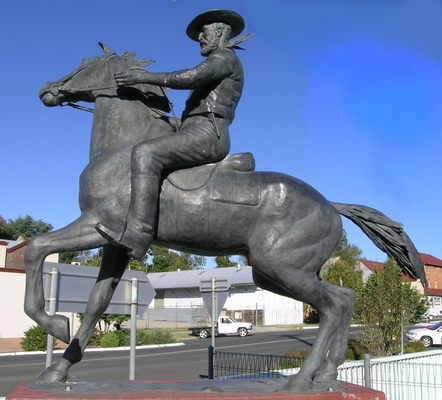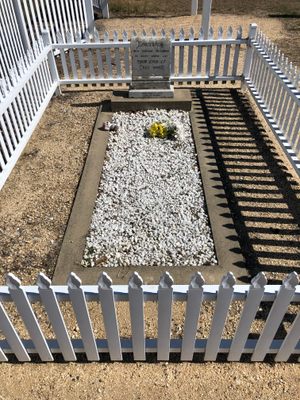About
Frederick Ward, more famously known as "Captain Thunderbolt," had become something of a folk hero due to his gentlemanly behavior and his tendency to avoid violence. His bushranging included roaming across a vast area of New South Wales, from the Hunter Valley to the Queensland border.
Less than three months after escaping from prison at Cockatoo Island in Sydney Harbor for the second time in 1863, Ward laid in wait at Split Rock to rob the mail coach. Seven years later following a spree of robbing mail coaches, travelers, inns, stores, and cattle stations, Split Rock was to provide the venue for Thunderbolt's last hold-up and final day.Almost four miles south of the statue on the New England Highway, the granite boulders, originally known as Split Rock, afforded Captain Thunderbolt the perfect vantage point for monitoring the approach of unwary mail coaches.
From that point and visible in the distance to the west of the rocks is a line of trees marking the course of Kentucky Creek where Ward was eventually shot by Constable Walker, an off-duty policeman, in 1870 after a dramatic showdown when Walker shot Thunderbolt’s horse out from under him in swamp land near Uralla. Walker was presented with a gold watch by the local community organization for his actions.
Related Tags
Know Before You Go
The Statue in located at the intersection of Salisbury and Bridge Streets Uralla.
A few meters east of the Thunderbolt Statue, is the often over-looked memorial to Constable Alexander Binning Walker, the officer who brought an end to the bushranger's career.
Captaint Thunderbolds grave can also be found in the nearby Uralla cemetary, in John St. 6 km south on the New England Hwy is Thuderbolt Rock.
Community Contributors
Added By
Published
October 7, 2022

























